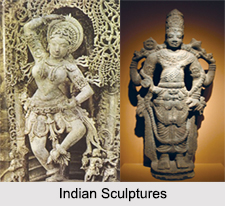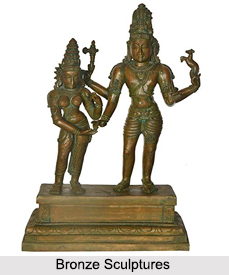 Indian Sculpture was the favoured medium of artistic expression on the Indian subcontinent. Indian buildings were profusely adorned with it and indeed are often inseparable from it. Indian Sculptures and its associated zone lay bare the fact that sculpture is essentially a public art. It is indeed amazing how even day to day affairs have been portrayed with the help of sculptures in India from political economy to the cultural hedonism the plethora is immense and extensive. Mankind have had used sculpture as the basic means of artistic expression. The art of sculpture requires the sculptors to breathe life to the cold and lifeless stones and rocks. The Indian artisans have been successfully rendering life to these listless blocks.History of Indian Sculptures
Indian Sculpture was the favoured medium of artistic expression on the Indian subcontinent. Indian buildings were profusely adorned with it and indeed are often inseparable from it. Indian Sculptures and its associated zone lay bare the fact that sculpture is essentially a public art. It is indeed amazing how even day to day affairs have been portrayed with the help of sculptures in India from political economy to the cultural hedonism the plethora is immense and extensive. Mankind have had used sculpture as the basic means of artistic expression. The art of sculpture requires the sculptors to breathe life to the cold and lifeless stones and rocks. The Indian artisans have been successfully rendering life to these listless blocks.History of Indian SculpturesHistory of Indian sculpture dates back to the Indus Valley Civilization of 2500 to 1800 BCE, during which time small terracotta figurines were produced. While stone, metal, ceramics and wood have taken a back seat; the sculpture zone has been swept off by the horizons of light and sound. Environmental art and sculpture has hogged the limelight and the contemporary age has manifested the nuances of the same. There was a constant influence of foreign art and culture that enriched Indian sculpture and architecture. The grandeur that the Islamic art brought to India has been embossed in marbles and red sandstones. When the British reigned over India, the sculptures were of the European Gothic style. A wide range of styles and traditions subsequently flourished in different parts of India over the succeeding centuries. Indian sculpture had reached a form that has lasted with little change up to the present day.Types of Indian Sculptures
The various types of Indian Sculptures depe
 nd on the materials of which the sculptures have been composed. They are as follows:
nd on the materials of which the sculptures have been composed. They are as follows:For more, visit the link below: